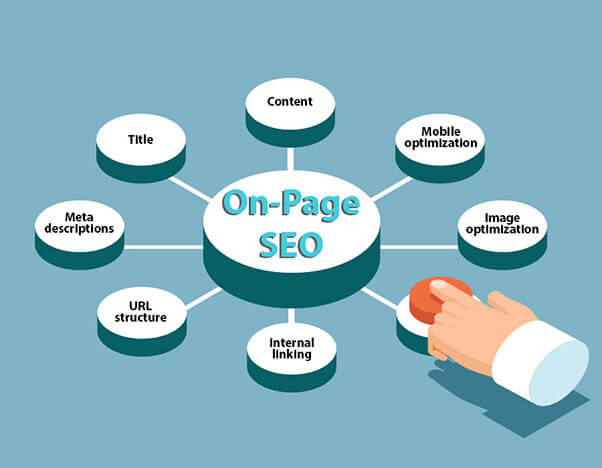Secret Elements of What Is Not Considered a Default Medium in Google Analytics
Secret Elements of What Is Not Considered a Default Medium in Google Analytics
Blog Article
Unveiling the Unconventional Mediums in Google Analytics Beyond Default Setups
In the world of digital analytics, Google Analytics stands as a foundation for organizations seeking to comprehend their on-line presence. While default settings use beneficial insights, truth deepness of recognizing lies in checking out the unique tools that frequently go unnoticed. By venturing past the surface area and diving right into the intricacies of social networks information, e-mail project efficiency, reference traffic sources, direct traffic patterns, and customized channel collections, a prize chest of details waits for those happy to welcome an extra nuanced approach. However, what lies beneath these non-traditional mediums may just redefine how businesses perceive and strategize their online initiatives.

Leveraging Social Media Insights
Periodically neglected, yet greatly important, is the technique of leveraging social media understandings within the world of Google Analytics. By integrating data from systems like Facebook, Twitter, Instagram, and LinkedIn into Google Analytics, services can obtain a deeper understanding of their target market and the performance of their social media campaigns.
Through this combination, marketing experts can track and evaluate user habits on their website that originates from social networks platforms. They can recognize which social media networks are driving one of the most traffic, which material is resonating with the audience, and which projects are converting the most leads. This insight enables for data-driven choices to maximize social media sites strategies and enhance general advertising efficiency.
In addition, by incorporating social media insights with Google Analytics, businesses can create much more targeted and customized campaigns - what is not considered a default medium in google analytics. They can use demographic information, interests, and on the internet behaviors gathered from social media to refine their target market division and supply customized messages that reverberate with certain client groups. This targeted method can lead to higher involvement, raised conversions, and inevitably, boosted roi
Discovering Email Campaign Performance
Revealing Email Project Performance involves analyzing key metrics and efficiency signs to assess the effectiveness of e-mail advertising and marketing initiatives. When delving right into e-mail campaign performance, it is important to evaluate metrics such as open rates, click-through prices, conversion rates, and unsubscribe rates. Open up rates indicate the percent of recipients that opened up the email, giving understanding into the performance of subject lines and sender names. Click-through prices measure the percent of recipients that clicked links within the e-mail, showing involvement levels. Conversion prices track the portion of recipients that completed a wanted action after clicking a link in the e-mail, such as signing or making an acquisition up for an e-newsletter. Unsubscribe rates highlight the number of recipients that opted out of getting further e-mails, losing light on email material quality and significance. By analyzing these metrics, marketing experts can tweak their e-mail campaigns for much better involvement and performance.
Studying Referral Web Traffic Resources
After reviewing the efficiency of e-mail projects through key metrics such as open rates and conversion rates, the next crucial action is evaluating reference website traffic resources in Google Analytics to comprehend where website site visitors are coming from and how they engage with the website. Referral traffic sources refer to the websites that route customers to your website with clickable web links. By delving into this data, services can get insights into which external platforms are driving traffic to their website, whether it be social media sites systems, companion web sites, or on the internet directories.
Evaluating referral traffic can provide beneficial details on the performance of outside marketing efforts and you could check here collaborations. It assists companies identify high-performing reference resources that contribute considerably to website web traffic and conversions. Additionally, by comprehending the behavior of site visitors coming from various reference sources, businesses can customize their marketing strategies to enhance engagement and conversions. Google Analytics supplies in-depth records on recommendation traffic, enabling businesses to track the efficiency of each referral resource properly and make data-driven decisions to boost their online visibility.
Checking Out Straight Web Traffic Patterns
Discovering the straight traffic patterns in Google Analytics provides important insights into customer actions and the performance of projects - what is not considered a default medium in google analytics. Straight website traffic describes site visitors that land on a website by directly typing the URL right into their internet browser, making use of book marks, or clicking untagged web links. Recognizing straight website traffic patterns can assist marketing experts evaluate the influence of offline advertising and marketing initiatives, brand name recognition, and the efficiency of word-of-mouth referrals
By delving right into straight web traffic data, companies can uncover crucial information concerning individual intent and brand loyalty. Analyzing the actions of straight visitors, such as the pages they see, the moment invested in website, and the conversion price, can supply a deeper understanding of customer involvement and the general effectiveness of the internet site in transforming visitors right into clients.
Furthermore, tracking direct website traffic patterns in time allows organizations to determine trends, seasonality results, and the success of particular projects or promotions in driving straight check outs. This information can after that be used to improve marketing techniques, optimize website web content, and improve the overall customer experience to maximize conversions.
Using Custom Network Groupings
Making use of personalized channel collections in Google Analytics allows companies to categorize and evaluate their site web traffic based on details requirements, providing important understandings for enhancing advertising techniques. Customized channel groupings make it possible for business to produce their very own customized groups of website traffic resources, such as social media, natural search, e-mail campaigns, and referral website traffic. By specifying these groups, companies can obtain a much deeper understanding of how various blog here advertising and marketing networks contribute to their internet site traffic and conversions.
This feature is particularly valuable for services with diverse marketing techniques across numerous platforms. A business running both paid and organic social media projects can distinguish in between the 2 to analyze their specific efficiency properly. In addition, personalized network collections can assist identify any type of ignored or taken too lightly website traffic resources that might be driving important engagement.
Conclusion

By venturing past the surface and diving into the ins and outs of social media data, e-mail project performance, recommendation web traffic sources, direct web traffic patterns, and custom channel groupings, a prize chest of info waits for those eager to welcome a much more nuanced strategy. They can identify which social media channels are driving the most traffic, which material is reverberating with the target market, and which projects are converting the most leads.After reviewing the performance of email campaigns with crucial metrics such as open rates and conversion rates, the next critical step is examining reference website traffic sources in Google Analytics to understand where web site site visitors are coming from and just how they connect with the website. Personalized network groupings enable firms to develop their very own tailored groups of website traffic resources, such content as social media, organic search, e-mail projects, and reference traffic. By leveraging social media insights, revealing e-mail project efficiency, examining referral web traffic resources, discovering straight traffic patterns, and utilizing custom-made network groupings, marketing experts can get important understandings into their on the internet existence.
Report this page